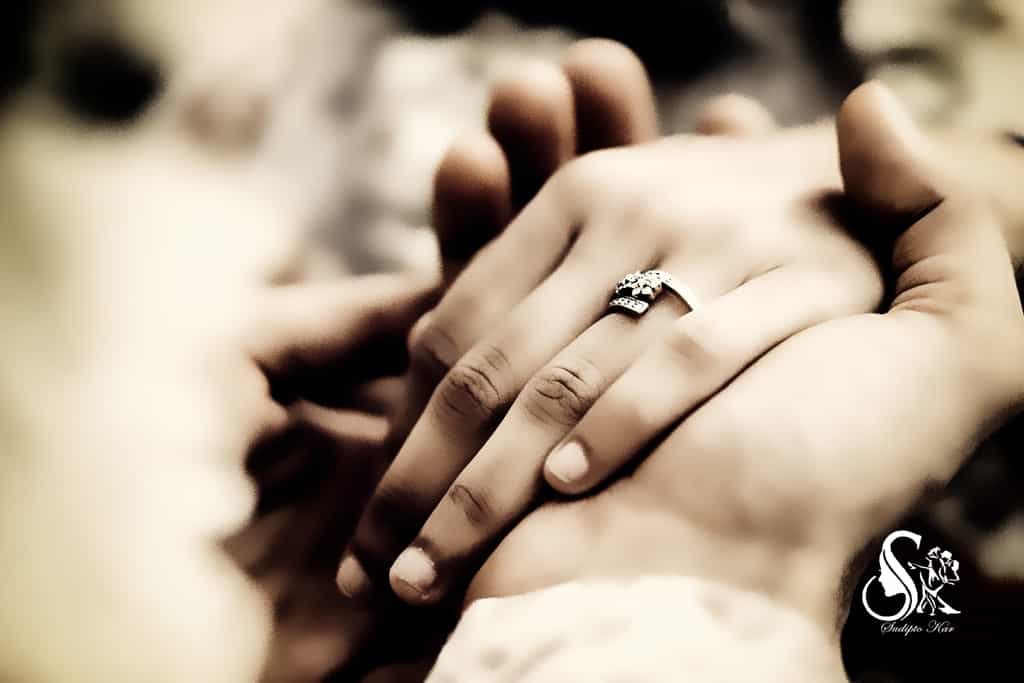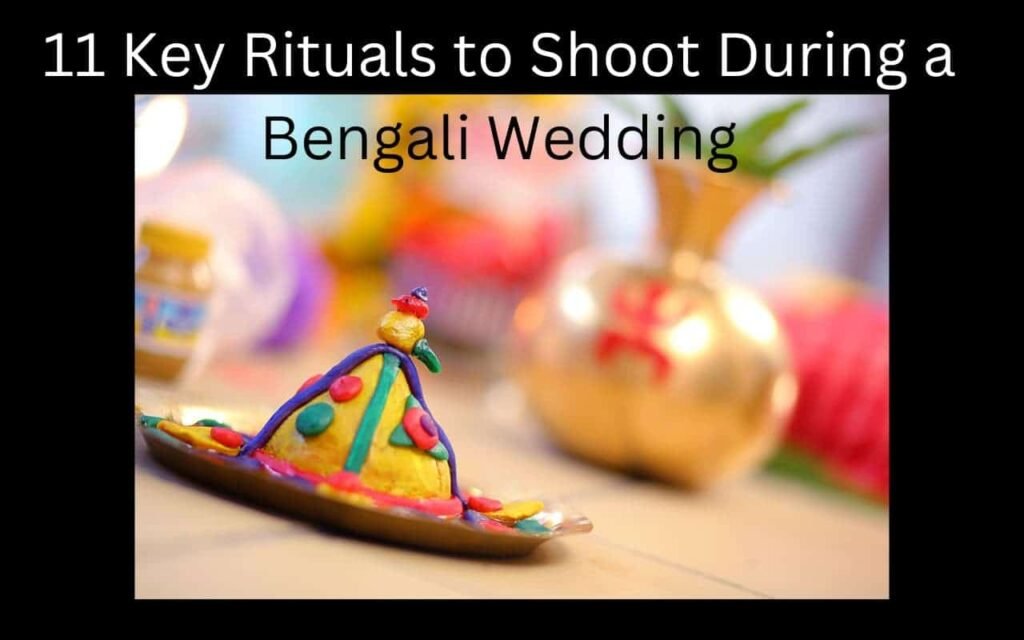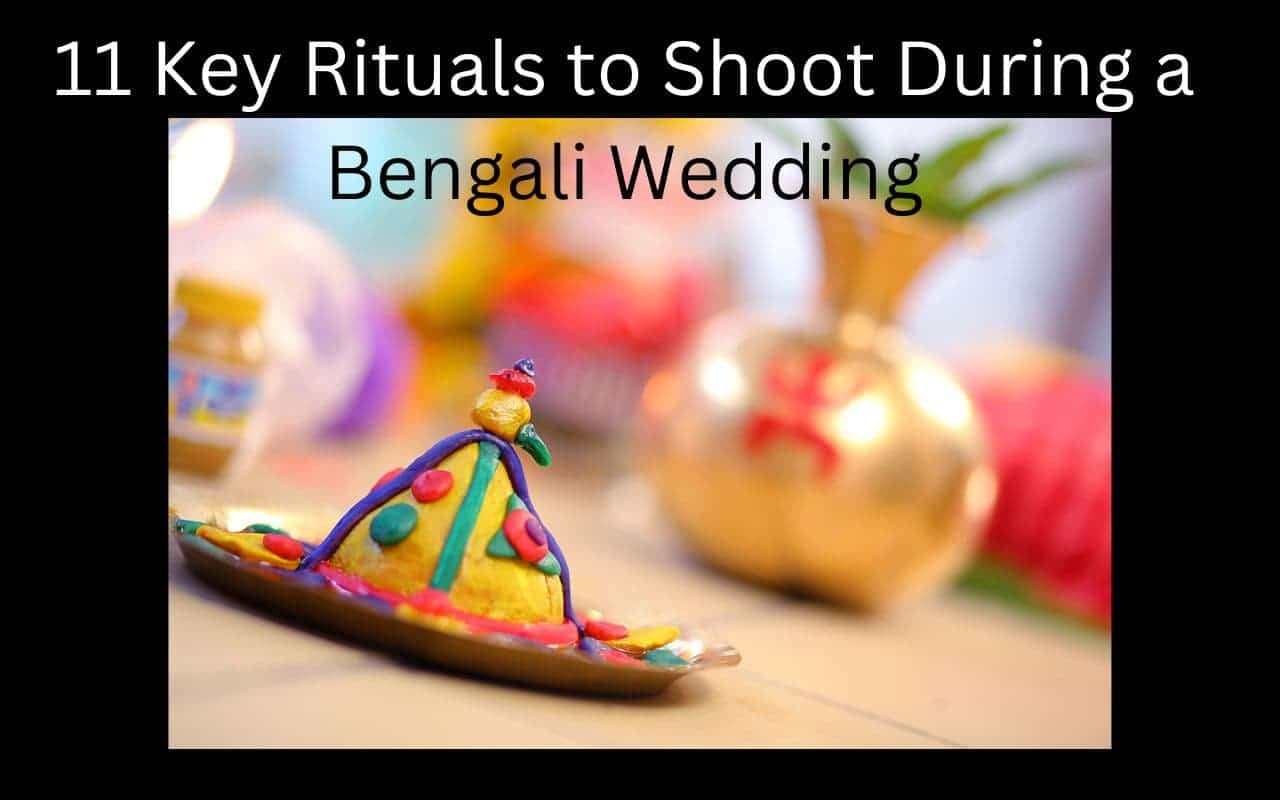
11 Key Rituals to Shoot During a Bengali Wedding

Latest Posts


11 Key Rituals to Shoot During a Bengali Wedding

A Quick Guide to Pre-wedding photography 2022
We all know that our country is all about unity in diversity. There are various ethnicities, cultures, and wedding rituals dominating Indian society. Every one of them has individual traditions while every tradition has specific significance. Wedding is undoubtedly one of the most important events of life. The event includes some precious and memorable days. Being a wedding photographer, you should capture the most exquisite and unforgettable jiffies of the D-day. You must embrace and maintain the right sequence of occurrences with optimal commitments, serenity, and perfection. A Bengali wedding is full of rituals – from beginning to end. Weddings are suffused with traditions, legacies, and beliefs.
Important Rituals of a Bengali Wedding
• Ashirbad
The event kicks off with the ritual namely Ashirbad. Trefoil plant and rice husk are sprinkled by the elders on the head of the bride at her house and also the groom at his house. This auspicious event is a part of pre-wedding rituals. Nowadays, the day is not celebrated separately on different days at both bride’s and groom’s houses. Rather the couples along with their families meet at a commonplace and enjoy candid moments of the casual ceremony. This might be considered to be the engagement ceremony. The couples bestow rings to each other’s fingers. This is a great opportunity for a photographer to take candid snaps of the people participating in the event along with the bride and the groom.
• Jolsoya
This is the occasion where a married couple of the family goes to the nearest waterbody along with a couple of married women and fills the brass pitcher. The water is then used for bathing during the Gaye Holud event.
• Gaye holud
Also known as Haldi ceremony among the non-Bengali community. An odd number of married women crush turmeric and smear it on the groom at his place and the bride at her place. This morning show while the relatives remain engrossed to apply haldi to the would-be bride or groom must be captured well.
• Totto
Before the Gaye Holud event starts at the bride’s place, extravagant endowments called Totto to come from the groom’s house. The Totto usually includes sarees and other attires, cosmetics, bags, shoes, sweets, and toiletries. Don’t miss the chance to capture each item along with the decorated rohu fish that the groom’s family sends.
• Sajsojya
This is the unavoidable part of a wedding where the bride gets ready for the biggest day of her life. Bengali brides compulsorily wear Sakha, Pola, and Loha. All of these are the signs of a married woman. The brides keep holding a gachhkouto filled with sindoor or vermilion and a kajal lata throughout the day. Now it comes to get ready with red lips and kohled eyes along with red bindi on the forehead. Gold ornaments are a must for a Bengali wedding. The ornaments may include necklace, jhumko, tikli, bala, chur, ratanchur, kanpasha, and so on. You must take snaps of the bride while she gets ready.
• Boragaman
The next is the arrival of the groom with this family and friends. They are welcomed with the blowing of shankha. The mother of the bride receives the would-be son-in-law with a borondala containing rice, betel nuts, turmeric, bananas, and a lighted Diya. She welcomes the groom by feeding him sweets and water.
• Saatpaak and Shubhodrishti
The groom is then taken to the Chhadnatola where puja is performed with the person going to do the ritual of kanyasampradan. The bride comes sitting on a wooden plank carried by her brothers and brothers-in-law. She keeps her face covered with betel leaves. The bride then takes 7 rounds around the groom. This is saatpaak. After this, the bride comes in front of the groom and removes the betel leaves to see her husband. This is subhodristi. As a wedding photographer, you should never miss capturing any of the candid moments of these rituals.
• Mala bodol
The couple exchanges their flower coronets, which is called mala bodol. Capture this lifetime moment.
• Sampradaan
After the event of mala bodol, the bride sits in the Chhadnatola opposite the groom. Usually, the father of the bride ties their hands with a pious thread while the priest chants mantras. This is the occasion through which the father gives away his daughter to the groom or jamai. If you love to add a bit of drama, capture the ritual from the perspective of a cinematographer.
• Saptapadi
Now the leading female member of the groom’s family toes a loop between the jor/shawl of the groom and the bride’s saree. And then the couple walks around the auspicious fire seven times while articulating seven vows.
• Sindoordaan
Finally it comes to sindoordaan. The groom applies vermilion or sindoor onto the parting or sinthi of the bride’s hair. And then her head is covered with lojjabostro. This is the most sacred and precious moment for the bride’s life as she turns into a wife from a daughter. Seize the moment in your camera.
Conclusion
So now as you know the special rituals of a Bengali wedding, you can better do your homework on capturing each of these events. You may make short videos of them as a cinematographer and take snaps as a photographer. Each should be done outstandingly. This is a lifetime event for the life of a couple. The moments you will capture will be nourished by them for the rest of their life.
